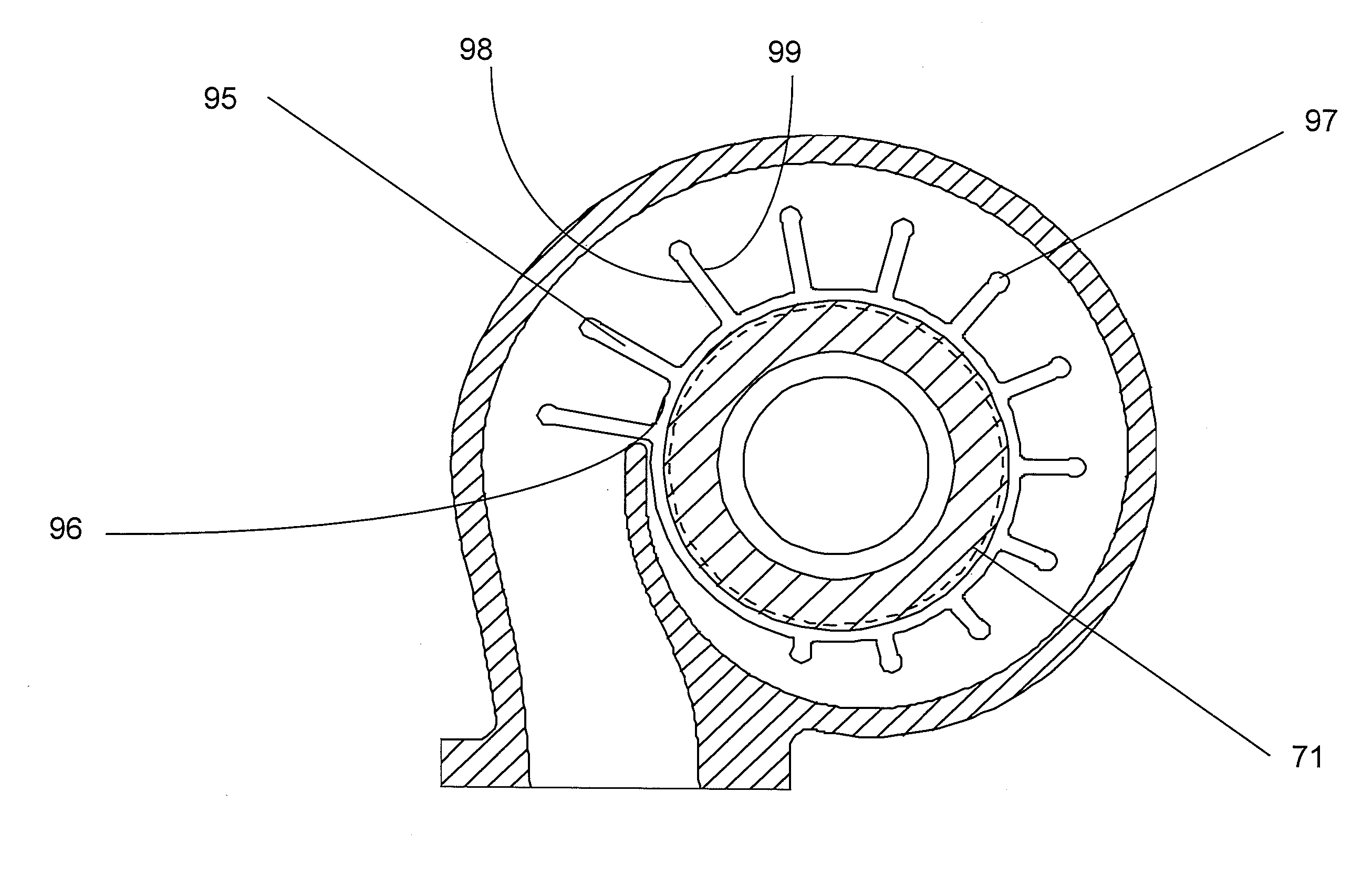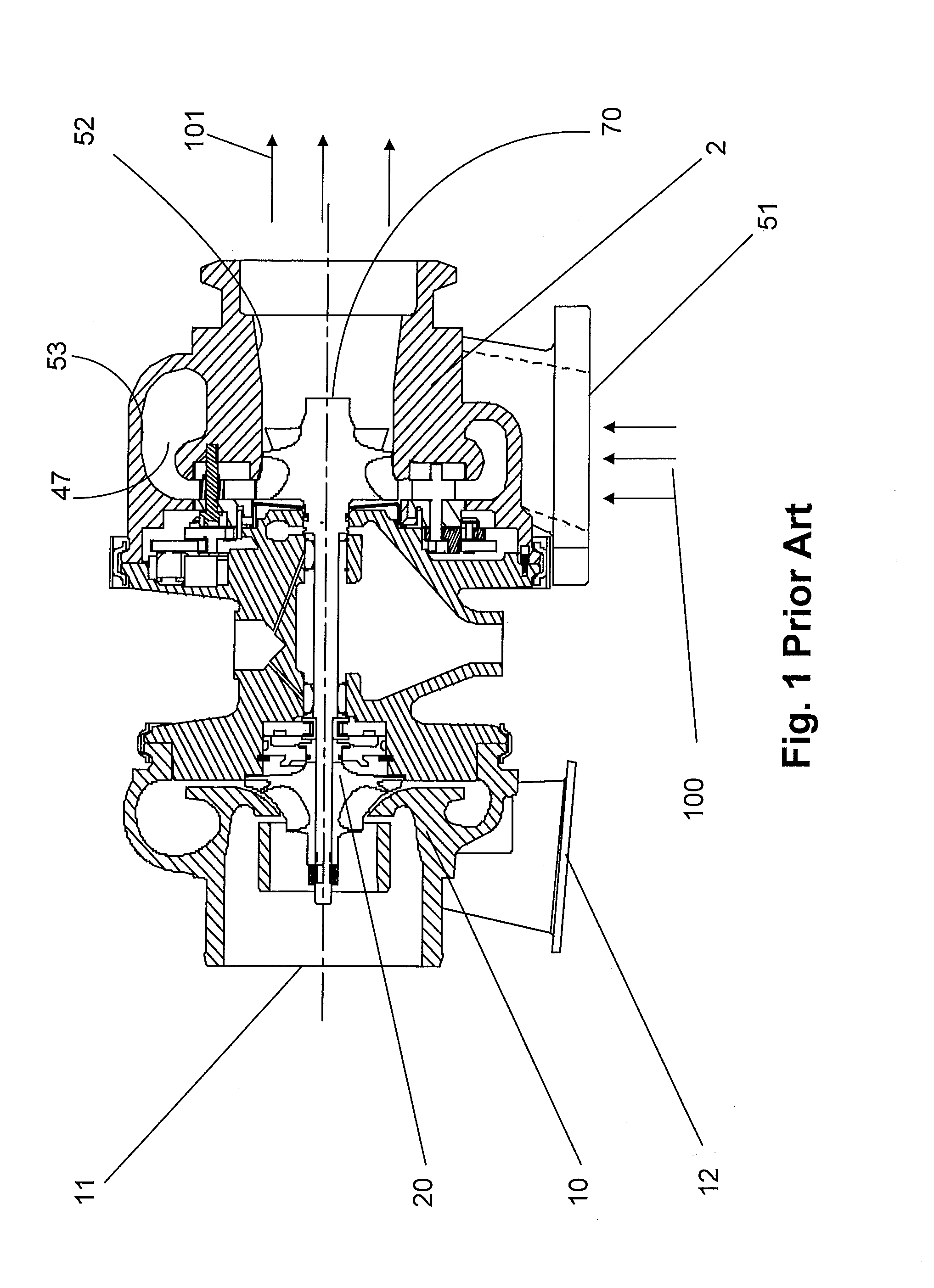Simplified variable geometry turbocharger with increased flow range
a variable geometry, turbocharger technology, applied in the direction of machines/engines, stators, liquid fuel engines, etc., can solve the problems of casting wanting to “unwind”, affecting etc., to achieve simple flow control devices, increase the flow range of the turbine stage, and reduce the effect of casting stress
- Summary
- Abstract
- Description
- Claims
- Application Information
AI Technical Summary
Benefits of technology
Problems solved by technology
Method used
Image
Examples
first embodiment
[0075]In the invention, the effective mass flow to the turbine wheel is controlled by a flow restrictor which pivots about a point in the turbine housing inlet or foot such that in the open position the pivotable valve member (72) of the flow restrictor is in line with the divider wall (25) of the turbine housing minimizing the restriction to the exhaust flow. As more restriction, or less mass flow to the turbine wheel, is required the pivot arm (73) is actuated to rotate about its axis (74, 78) causing the pivotable valve member (72) to impede the flow of exhaust gas to the large volute (48), which causes a modulatable reduction in mass flow to the turbine wheel.
[0076]In a variation to the first embodiment of the invention, as depicted in FIGS. 11A and 11B, the flow restrictor takes the form of a butterfly valve (80) which reduces the moment on the pivot arm (81) enabling the potential use of a lower force, and thus lower cost actuator. In FIG. 11A, which is a section view of the f...
third embodiment
[0083]In the invention, a triple flow turbine housing as depicted in FIG. 15A is preferably used. Two axial volute divider walls (103, 104) are fabricated into the turbine housing such that the ratio of flows through the unrestricted adjacent volutes, from outer to inner are approximately 70% to 20% to 10%. These proportions can be varied depending upon requirements. The ratio of flows is only important in that the sum of the open areas of the modulated volutes is equal to the area of the modulating restrictor valve. A flow restrictor valve is provided. The flow restrictor valve pivots about a point in the turbine housing inlet or foot such that in the open position, the blade (89) of the flow restrictor is flush with the turbine housing outer volute wall minimizing the restriction to the exhaust flow. As more restriction, or less mass flow, to the turbine wheel is required, the pivot arm (73) is actuated to rotate about its axis causing the blade (89) to impede the flow of exhaust ...
PUM
 Login to View More
Login to View More Abstract
Description
Claims
Application Information
 Login to View More
Login to View More - R&D
- Intellectual Property
- Life Sciences
- Materials
- Tech Scout
- Unparalleled Data Quality
- Higher Quality Content
- 60% Fewer Hallucinations
Browse by: Latest US Patents, China's latest patents, Technical Efficacy Thesaurus, Application Domain, Technology Topic, Popular Technical Reports.
© 2025 PatSnap. All rights reserved.Legal|Privacy policy|Modern Slavery Act Transparency Statement|Sitemap|About US| Contact US: help@patsnap.com



